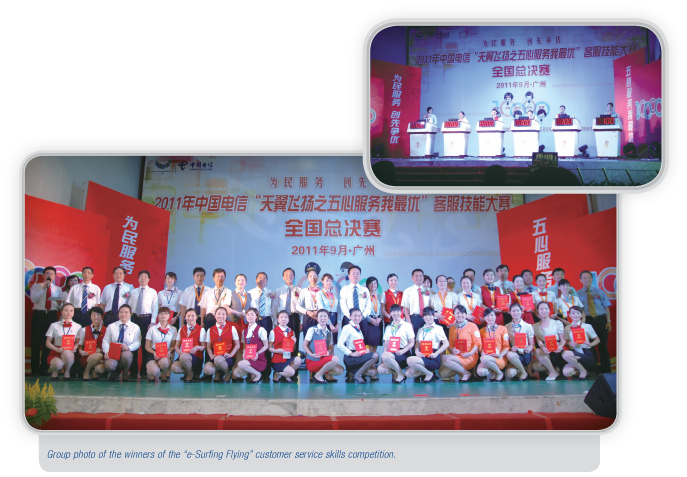Human Resources Development Report
Corporate-Employee Relationship
Communication between Management and Employees
The Company strived to build harmonious labour relationships by maintaining close contact with employees. The management persisted in communication with the employees through various methods and channels. The management regularly visited the frontline employees to get first-hand information. Through a variety of methods such as the “Mailbox of General Manager”, the “Labour Union Chairman’s Mailbox”, “Face-to-Face with the General Manager” and “Online Direct Train of Soul”, each level of the Company listened to our employees’ views. Moreover, the Company conscientiously carried out employee surveys on the issues that employees are concerned about, analysed the key problems, clarified and grasped their thoughts and ideas and ensured that their demands were resolved in a reasonable and timely manner.
Roles and Duties of Labour Unions
By persisting in the principle of “promoting both corporate development and the employees’ growth” and following the guideline of “focusing on the main goals of the Company, serving the general interest, highlighting employee rights and enhancing participation”, the labour unions played an important role in the Company’s management, reform and full services operation. In 2011, the labour unions organised the “e-Surfing Flying” series of skill competitions. At the provincial level, the labour unions conducted more than 140 skill competitions with over one million employees participating, which played an important role in boosting the Company’s full services development.

According to the requirement of building a team of the “Four First-Class” employees, namely employees with first-class professionalism, first-class service skills, first-class work style and first-class job performance, the labour unions of the Company organised and conducted activities such as on-the-job training, skills competitions and activities of building learning teams to create a knowledge-sharing platform and to summarise and promote excellent operating methods so as to help employees improve their service skills. The labour unions collected over 3,000 rationalisation proposals and adopted nearly 1,000. Through on-the-job training, the Company not only promoted the improvement of employees’ skills, but also enhanced employees’ corporate identity.
Through democratic management systems, such as the Employees’ Representative Congress, the labour unions organised the employees to participate in the decision-making process on major employee-benefit matters and the formulation of the relevant corporate rules and regulations of the Company. As a result, the employee participation rate of congresses in relation to employee-benefit matters has continuously increased.
Coordination and Communication between the Company and the Labour Unions
The Company continued to strengthen our efforts in caring for our employees and promoting harmonious development, reinforcing coordination and communication with the labour unions. Through forming the Labour Emulation Committee, the Company coordinated and communicated with the labour unions in the organisation of activities such as skill competitions.
The Company deepened the implementation of the terms of reference for the Employees’ Representative Congress of the provincial branches, maximising the role of Employee Representatives. Through the system of Joint Chairman of Provincial Unions, the labour unions elected the Employee Representative Supervisor to the Company’s Supervisory Committee, reviewed and approved the Company’s annuity plan and the supplementary provisions, thus safeguarding the legitimate rights and interests of employees at the source. The labour unions conducted collective negotiations with the Company focusing on standardising the terms of employment contracts, improving the effectiveness of collective contracts, enhancing the system of Employees’ Representative Congress and promoting employee participation in the Company’s employee management and coordinating corporate-employee relation. Moreover, the labour unions and the Company fully leveraged on the Labour Disputes Mediation Committee to enhance communication and coordination concerning labour disputes and pragmatically promote the construction of the labour rights protection mechanism.


